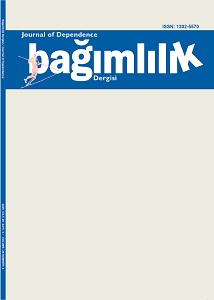The comorbidity of pathological gambling and conversion disorder: case report and the psychotherapy progress
Keywords:
pathological gambling, cognitive behavioral therapy (CBT), eye movement desensitization and replacement therapy (EMDR)Abstract
This paper focuses on the psychotherapy process of a pathological gambling dependency case in which a combination of CBT and EMDR techniques was used. A factor that distinguishes this case is the comorbidity of conversion symptoms and their effects in the gambling cycle. The case was 38 year-old man, married and had a daughter. He was admitted to psychotherapy due to the addiction of playing horse racing continued for many years and causing huge financial losses. In addition, he had moderate depressive signs and conversion symptoms. The psychotherapy progress was continued for 12 sessions without medical support because he didn’t benefit from drug treatment continuing for many years. The patient’s desire to gamble and conversion symptoms hadn’t relapsed during 1-year period. This case report underlined that EMDR and CBT are useful treatment options in pathological gambling addiction.
References
Amerikan Psikiyatri Birliği (APA). DSM-IV Tanı Ölçütleri Başvuru El Kitabı. E. Köroğlu (Çev. Ed.). 4. Baskı, Ankara: HYB Yayıncılık, 2007.
Guriz SO, Ekinci A, Türkçapar MH. Bir patolojik kumar hastasının bilişsel davranışçı terapisi. Bilişsel Davranışçı Psikoterapi ve Araştırmalar Dergisi 2012; 1: 1105-112.
Smith DP, Battersby MW, Harvey PW, et al. Two-group randomised, parallel trial of cognitive and exposure therapies for problem gambling: a research protocol. BMJ Open 2013; 3: 1-9.
Amerikan Psikiyatri Birliği (APA). DSM-5 Tanı Ölçütleri Başvuru El Kitabı. E. Köroğlu (Çev. Ed.). Ankara: HYB Yayıncılık, 2013.
Blaszczynski A, Nower L. A pathways model of problem and pathological gambling. Addiction 2002; 97: 487–499.
Rizeanu S. The specificity of pathological gambling. Social and Behavioral Sciences 2012; 33: 1082–1086.
Dannon PN, Lowengrub K, Gonopolski Y, et al. Pathological gambling: A review of phenomenological models and treatment modalities for an underrecognized psychiatric disorder. Prim Care Companion J Clin Psychiatry 2006; 8: 334-339.
Kalyoncu ÖA, Pektaş Ö, Mırsal H. Patolojik kumar oynama: biyopsikososyal yaklaşım. Bağımlılık Dergisi 2003; 4 (2): 76-80.
Black DW, Moyer T. Clinical features and psychiatric comorbidity of subjects with pathological gambling behavior. Psychiatric Services 1998; 49 (11): 1434–1439.
Carlbring P, Jonsson J, Josephson H, Forsberg L. Motivational interviewing versus cognitive behavioral group therapy in the treatment of problem and pathological gambling: a randomized controlled trial. Cogn Behav Ther 2010; 39 (2): 92-103.
Ladouceur R, Sylvain C, Boutin C, et al. Cognitive treatment of pathological gambling. J Nerv Ment Dis 2001; 189: 774–780.
Miller R. The feeling-state impulse-control disorders impulse-control disorder Traumatology 2010; 16 theory of and the protocol. (3): 2-10.
Downloads
Published
Issue
Section
License
Copyright (c) 2025 Journal of Dependence

This work is licensed under a Creative Commons Attribution-NonCommercial-NoDerivatives 4.0 International License.
The Journal and content of this website is licensed under the terms of the Creative Commons Attribution-NonCommercial-NoDerivatives 4.0 International (CC BY-NC-ND 4.0) License. This is in accordance with the Budapest Open Access Initiative (BOAI) definition of open access. The Creative Commons Attribution-NonCommercial-NoDerivatives 4.0 International (CC BY-NC-ND 4.0) allows users to copy, distribute and transmit unmodified article, and make noncommercial use of the article. The CC BY license permits non-commercial re-use of an open access article, as long as the author is properly attributed.

